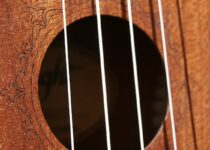Getting familiar with ukulele anatomy might not sound like a very enticing part of learning the instrument. However, we’d argue that it’s a crucial part of any ukulele journey.
Being aware of the parts of a ukulele and how your ukulele functions will deepen your understanding of the instrument as a whole. This knowledge will also be invaluable in maintaining your uke.
Post Contents
Our Breakdown of the Different Ukulele Parts
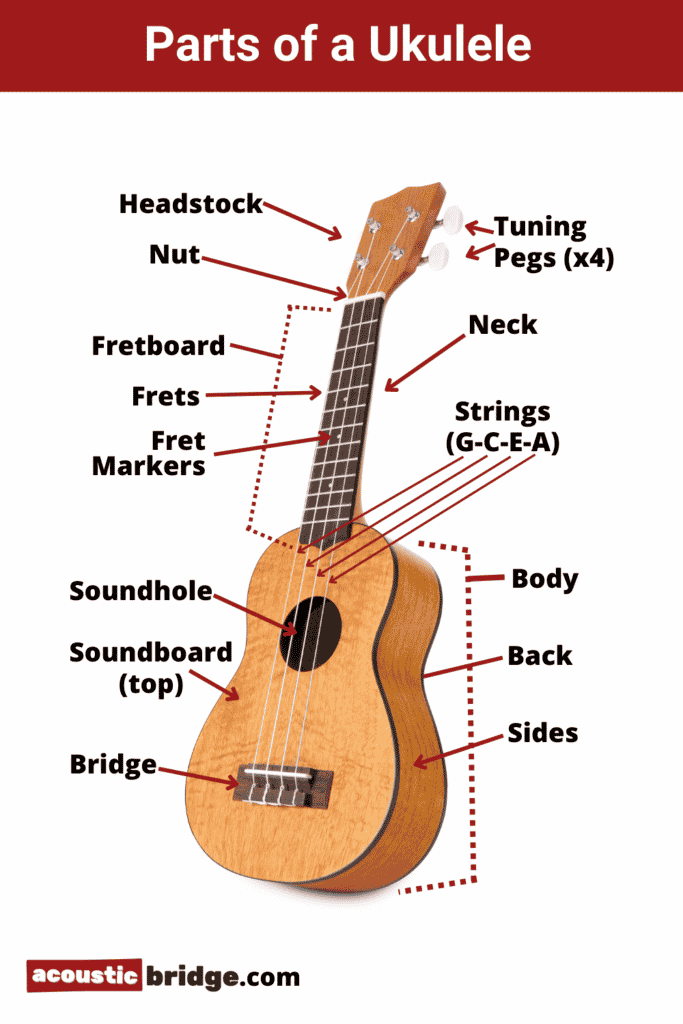
At first glance, the parts of a ukulele don’t seem complicated. After all, the ukulele is a small instrument, generally made from solid wood, and typically only has four strings.
While ukuleles generally have fewer parts than, say, wind instruments, that doesn’t mean that they are simple to construct. On the contrary, ukuleles have many components that need to fit together and work in harmony.
This guide goes over ukulele anatomy and the various components of your uke. We discuss which parts are primarily functional, which parts are more cosmetic, and which parts are somewhere in between. If you’ve ever wanted the opportunity to familiarize yourself with the different parts of the ukulele, now is your chance!
Headstock
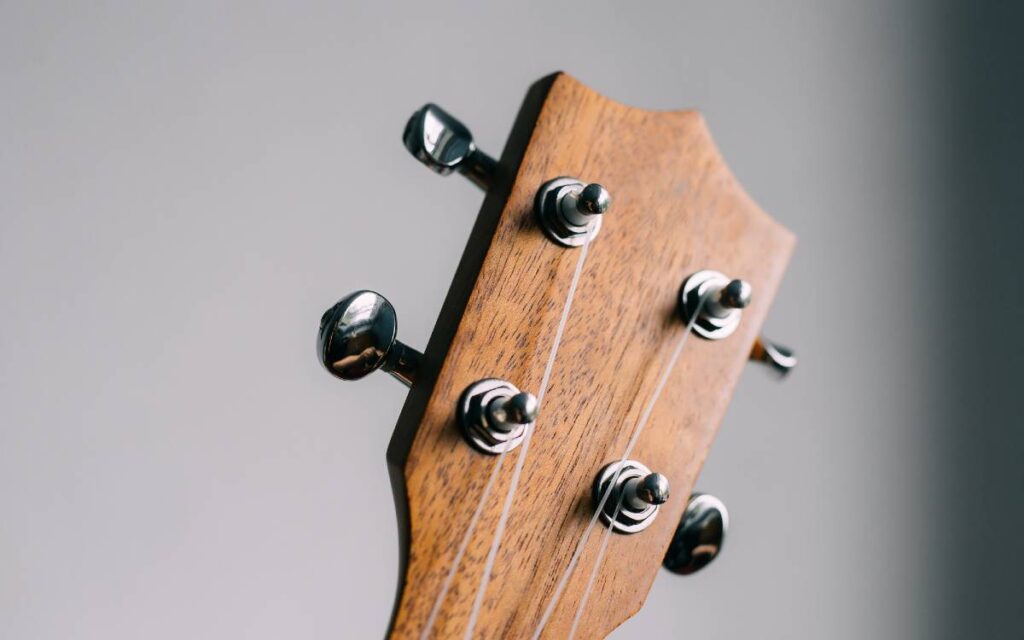
At the top of the ukulele is the headstock. The headstock is where you’ll find the tuning heads or tuning pegs and your ukulele brand logo, if it has one. Ukulele headstocks can vary widely in shape, mainly for cosmetic reasons. However, the instrument’s headstock plays a role in maintaining the string tension necessary for the uke to be playable.
It’s also vital that the headstock is sturdy enough to support this tension, which stretches between the tuning pegs on the headstock and the bridge.
Tuning Pegs
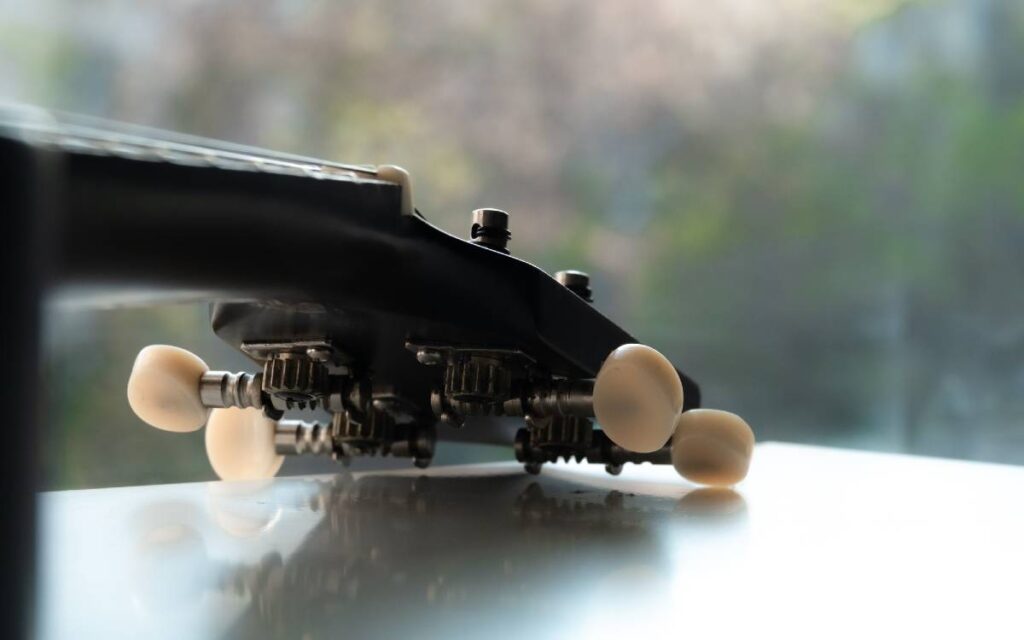
The tuning peg is used to adjust the pitch or tuning of your ukulele’s strings. Tuning keys are drilled into the ukulele’s headstock and are made up of machine heads, screws, pegs, and various other components which allow the pegs to turn. The pegs are usually made from metal or hard plastic.
Most ukes only have four tuning pegs, one for each of the four ukulele strings. However, some variations of the ukulele, such as the guitarlele, have more than four strings (the guitarlele has 6). These instruments have more tuning pegs to accommodate.
It’s also worth noting that there are different tunings that you can use on the ukulele. Standard ukulele tuning is also a type of re-entrant tuning, where the strings do not follow pitch order from lowest to highest. This tuning arrangement is part of what gives the ukulele its distinctive sound. However, some alternative tunings do follow pitch order.
Body
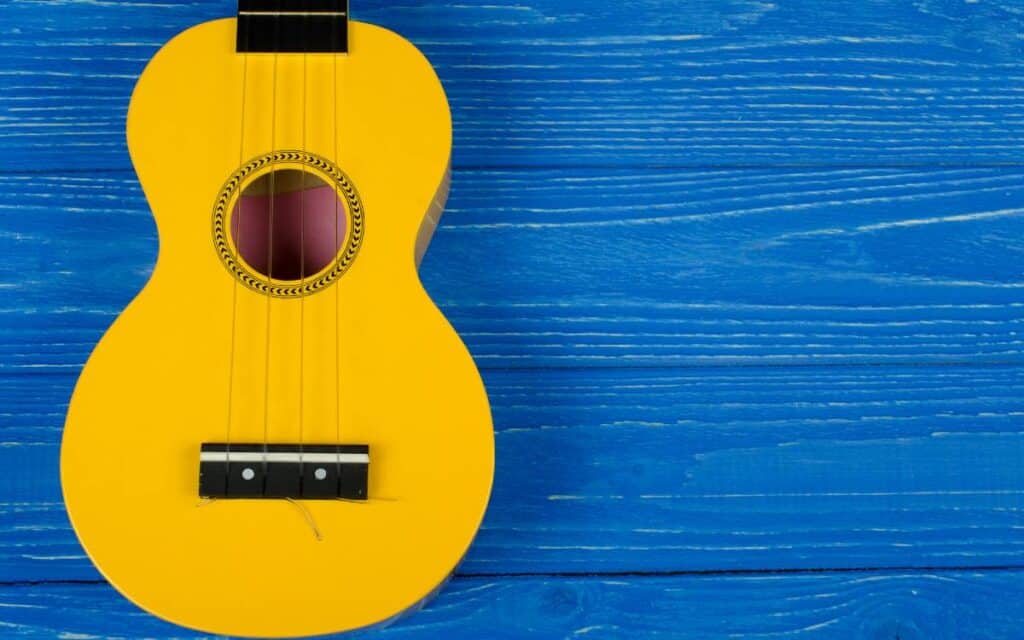
As with most stringed instruments, the body of the ukulele is its largest and perhaps most important part. Because there are several different types and sizes of ukuleles, body size among ukuleles varies quite a bit.
Soprano ukuleles are considered standard in the ukulele world, and they are the smallest out of the conventional ukulele types. Soprano ukuleles tend to have a high, clear, ringing tone and quality.
In addition to the soprano uke, there are concert ukulele, tenor ukulele, and baritone ukulele sizes. These are all larger instruments than soprano ukes, and they all have deeper and more resonant sounds as a result. In addition, baritone ukuleles use baritone tuning, which is entirely different from standard ukulele tuning.
The body of the ukulele is typically made of wood. Higher-end ukuleles are made from solid wood, whereas budget models may be made from laminated wood. The type of wood used also varies depending on the instrument manufacturer. Exotic woods tend to be favored by higher-end manufacturers, for example.
Hawaiian Koa, in particular, is a popular choice for ukulele bodies, especially among more traditional luthiers based in Hawaii. Other popular options include mahogany, cedar, and maple. While the different types of wood have their own tonal qualities, there is also an element of aesthetics that each wood brings to the instrument’s body.
Some ukuleles are acoustic-electric and have built-in tuners, pickups, and preamps installed in the instrument’s body.
Other parts of the ukulele that are directly affixed to, or are part of the ukulele’s body, include the soundhole and the bridge.
Soundboard

The soundboard is also called the ‘top’ of the ukulele. It is the part of the body that faces away from you, and it also contains the soundhole. The soundboard on your uke may also have various aesthetic features, such as trim, detailing, and lacquering. Aesthetic details are typical around the soundhole and the border of the soundboard.
Soundhole
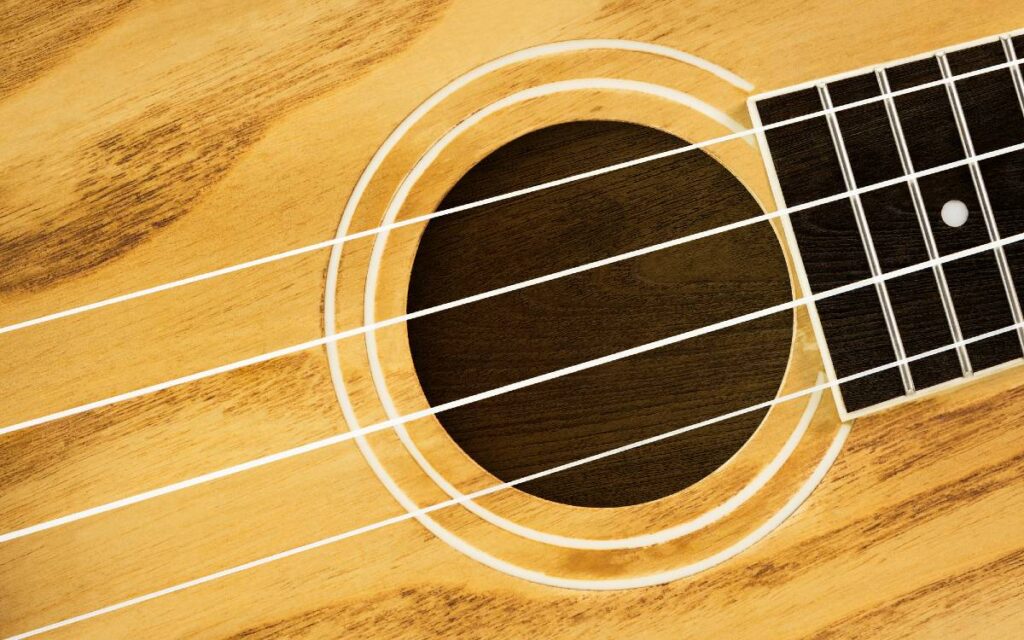
The soundhole may seem like a small thing, but it’s crucial for the functioning of your ukulele. The soundhole in the top of your ukulele is what projects the sounds produced within the body when you play.
Also, if you look inside the soundhole, you’ll find a label attached to the interior of the ukulele that tells you which ukulele brand manufactured the instrument, what model it is, and so on.
Having a label like this is particularly important for classical instruments, which were all handmade. Luthiers wrote their names inside the instruments they made, making it much easier to track them down if the instruments needed repairs or additional work done.
Back
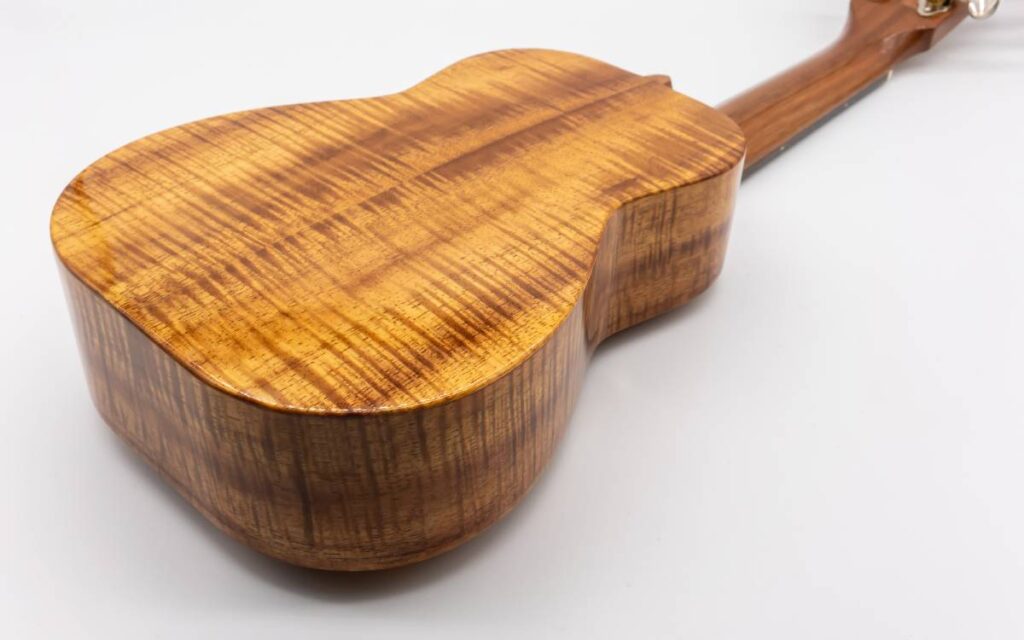
As you might have guessed, the back of the instrument is the opposite side to its top or soundboard. Depending on the type of ukulele you own, its back may be a different type of wood from its front. This wood choice can be for practical purposes or the impact on the instrument’s overall sound. Ukuleles that feature sold tops sometimes have laminated backs and sides. Or, there may be a different type of solid wood that imparts other tonal qualities.
Neck

The neck is another significant component of any ukulele. It’s home to the fretboard, which you can use to manipulate and change the pitches and tones of the strings. Depending on the manufacturer and type of ukulele, the wood on the back of the neck may be the same type of wood as the rest of the body, or it might be a different kind of wood.
There are also multiple neck profiles to choose from, which affect how narrow or thick the neck is and how your uke feels to play.
It’s important to note that neck profile only affects how your ukulele feels to your fretting hand. It shouldn’t make a difference to your strumming hand.
Fretboard
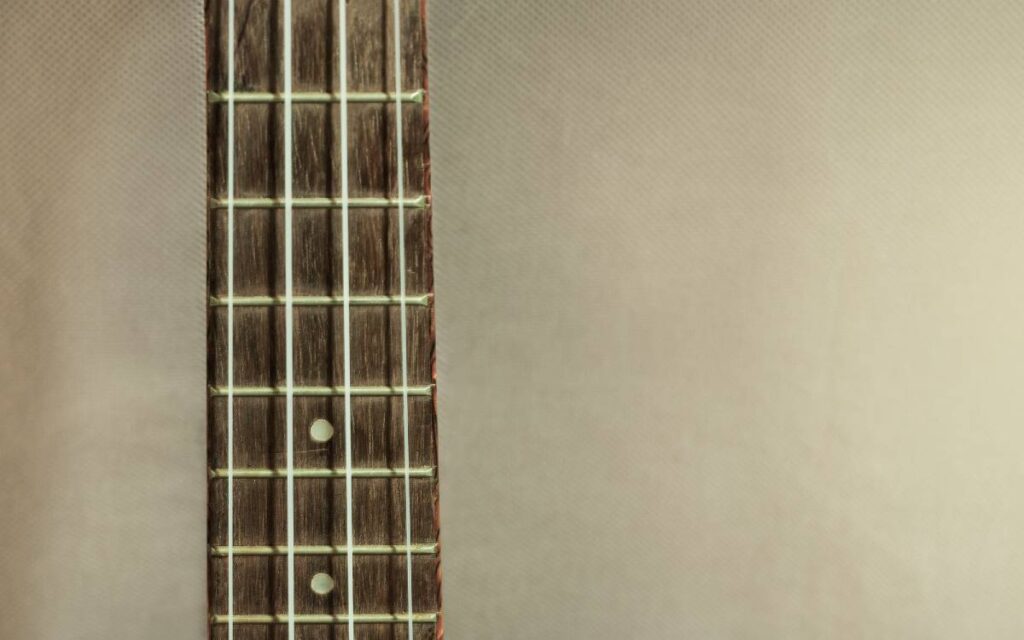
The fretboard is the piece of wood at the front of the neck of your ukulele. The type of wood used for the fretboard can vary quite dramatically depending on the manufacturer, supplier, and the price of a particular ukulele.
Most traditional ukuleles will use dark wood for their fretboards. In the past, darker hardwoods were used for fretboards, so using dark woods nowadays is essentially a homage to this feature, at least partially. Also, darker woods like rosewood and ebony have a different sound than light woods like maple.
Some less traditional ukuleles or ukulele hybrid instruments, like guitaleles, feature lighter woods like maple for their fretboards. Fretboards may also have decorative inlays in the fret space, which help with hand positioning and keeping track of where you are on the instrument.
Nut
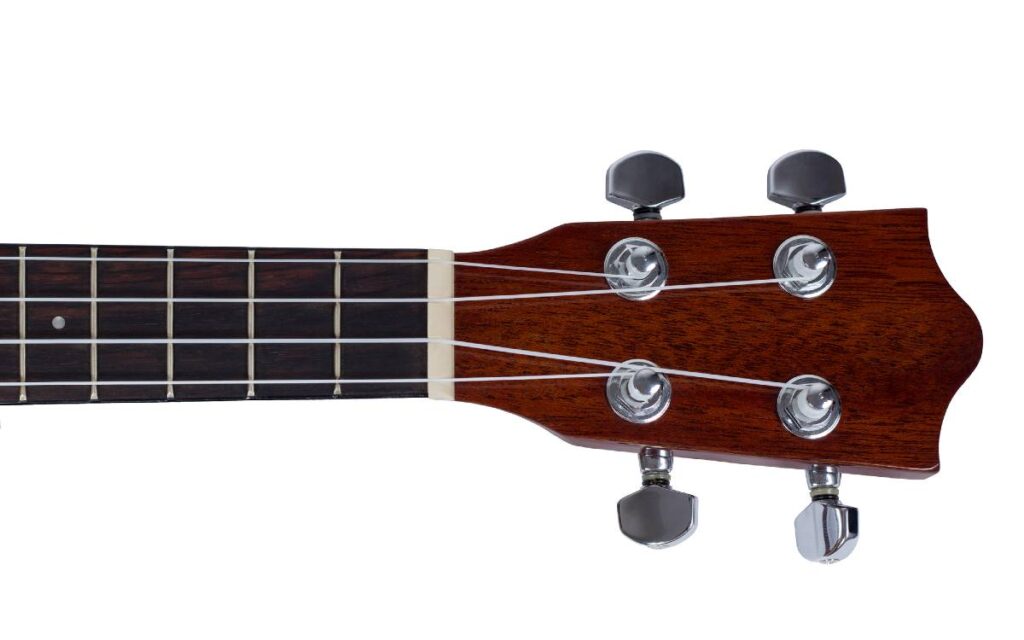
The nut on the ukulele sits at the very top of the fretboard, underneath the headstock. It has small notches that the strings rest in before they enter the tuning pegs. The nut’s role is to keep the strings clear of the fretboard and help maintain the right amount of string tension.
If the strings sit too close to the fretboard, this can cause several problems. One common problem is fret buzz, which results from a string rattling right up against one of the frets. Fret buzz can be frustrating and very detrimental to the instrument’s sound, especially when it’s constant.
Traditionally, nuts on guitars and ukuleles were made of bone, which is still the case for higher-end instruments. However, using cheaper and more accessible materials like plastic for ukulele nuts has become increasingly common. Most people note that there is some difference between the way plastic and bone nuts sound. Functionally, though, there is barely any difference otherwise.
Frets

Frets are the small strips of metal that are set into the fretboard. Frets go up or down in semi-tonal increments, and the closer you get to the headstock, the lower the tone gets. The closer you get to the bridge, the higher the tone gets.
You change the tone by pressing down on one of the strings in the space between two frets, which shortens or lengthens the string and changes the pitch.
Fret Markers/Fret Dots
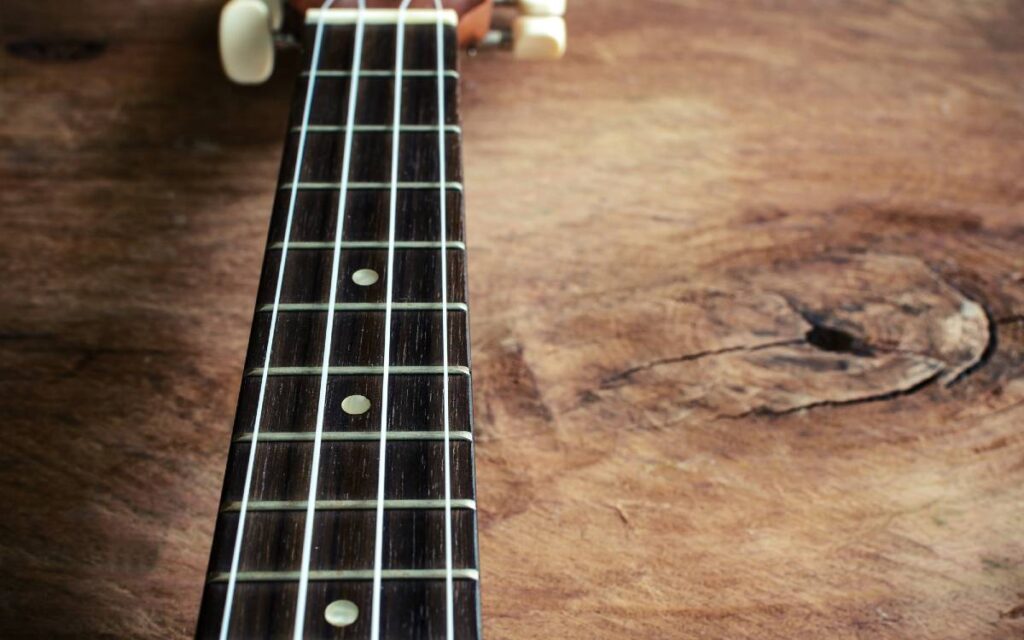
One minor but handy feature on almost all ukuleles is their fret markers, also known as fret dots. You’ll find these position markers between the fret spaces to help show you when you’re in the correct position to play a particular note. Fret markers are typically dots, but higher-end instruments may have decorative inlays to mark the frets instead.
Bridge
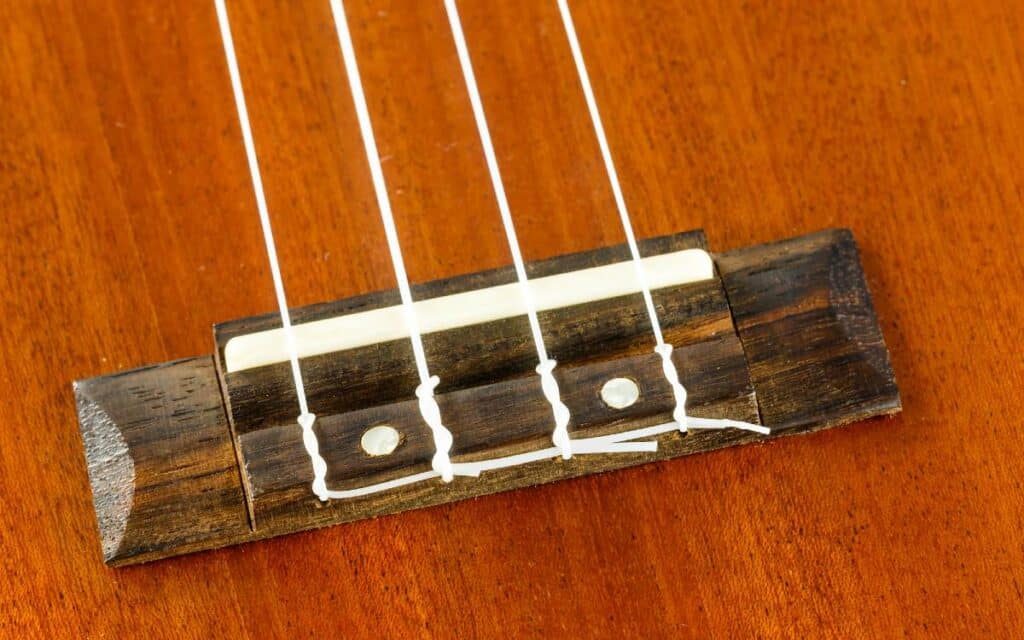
You’ll find your ukulele’s bridge mounted to the top of the ukulele body, usually glued on. The bridge serves multiple purposes. It maintains the string tension throughout the ukulele and provides a place to mount the strings. It also helps to transfer the strings’ vibrations into the wood of the ukulele’s body.
There are several different types of ukulele bridges, and the kind that your ukulele has will likely depend on the manufacturer. The bridge type will impact the functionality of your uke, too. For example, with tie-bar bridges, you feed the strings through a hole in the bridge and then tie a knot at the end to stop them from slipping back out again.
Slotted bridges work similarly; you tie knots in the ends of the strings to stop them from slipping out. Some ukuleles have pin bridges like acoustic guitars, where you feed the strings into a hole in the bridge and then push a pin over them to keep them in place. Finally, some ukes have holes in the body that the bridge rests over, and the string feeds through the hole in the body and bridge.
Strings
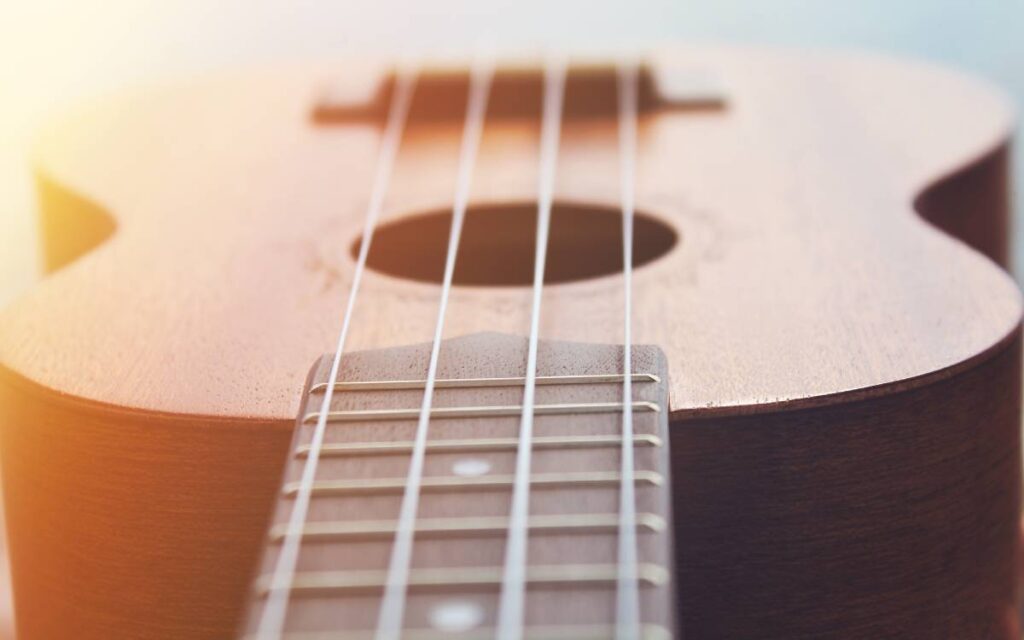
While not physically part of your ukulele in the same way as the rest of the components on this list, ukulele strings are an essential component. Historically, ukulele strings were made out of catgut, and some high-end manufacturers still produce ukulele strings out of gut.
However, most ukulele strings are now made out of synthetic material. The kind of material depends on the type of ukulele. Smaller ukes, like soprano and concert sizes, often use nylon strings. Larger models, like baritones, often use strings that are a combination of nylon and metal wound strings.
By combining metal wound strings with nylon strings, you get a richer, more resonant tone that you’d generally want from a baritone or tenor uke. Strings have a substantial impact on the overall sound of your ukulele. Different manufacturers have different procedures and materials that they use, so your choice of strings can affect the timbre and tone of your instrument as a whole.



